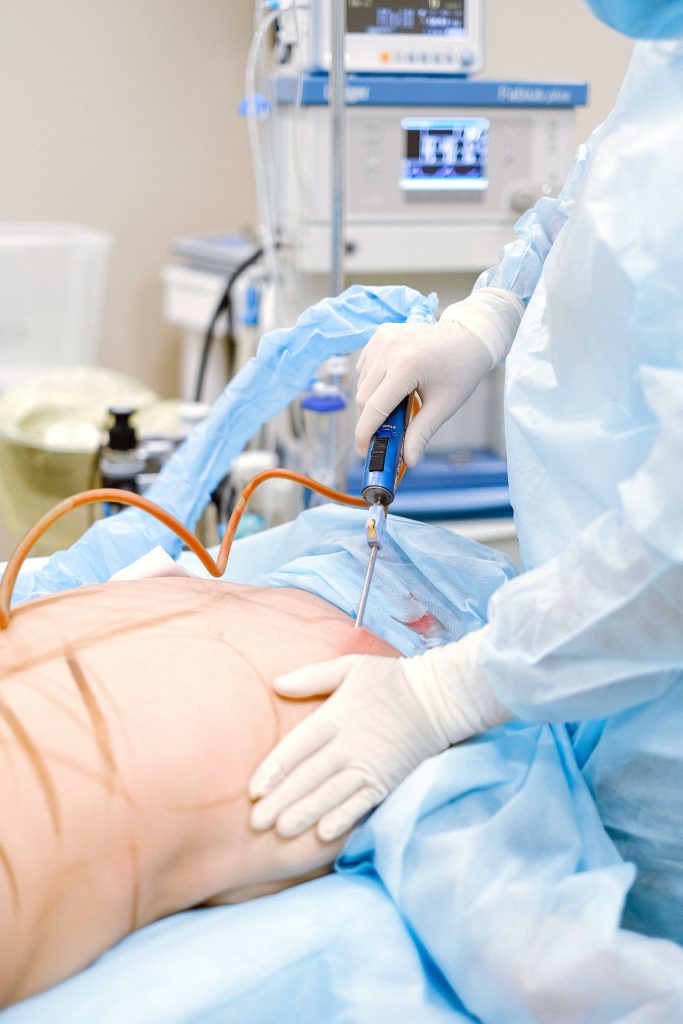Navigating Scars: Understanding Scarring in Liposuction
Posted on: March 12, 2024
Liposuction promises a sculpted body, but the fear of scarring holds many back. While it’s a popular way to bid farewell to stubborn fat, the aftermath often leaves potential candidates wondering if it’s worth the trade-off. This post delves into what you need to know about liposuction and its scar potential. We’ll explore how advancements in techniques are minimizing this concern, offering hope for those seeking transformation without noticeable marks. Dive into an honest discussion on balancing expectations with reality when considering liposuction.
Understanding Liposuction Techniques
Traditional Lipo
Traditional liposuction, often known as suction-assisted lipectomy, involves making small incisions to insert a thin tube. This tube breaks up and sucks out fat from the body. It’s effective for removing large volumes of unwanted fat. However, it can be quite invasive.
Patients might experience significant bruising and swelling. These effects contribute to the risk of noticeable scarring post-procedure.
Modern Methods
Recent advancements have introduced less invasive techniques. They focus on minimizing tissue trauma which, in turn, reduces scar formation. Technologies like ultrasound-assisted liposuction (UAL) and laser-assisted liposuction (LAL) stand out.
UAL uses sound waves to liquefy fat before removal. LAL employs laser energy for the same purpose. Both methods require smaller incisions compared to traditional lipo, leading to less visible scars.
Technology’s Role
The role of technology cannot be understated in reducing scar formation following liposuction procedures. Innovations in lipo techniques aim at minimizing physical trauma during fat removal. This careful approach significantly lowers the chances of developing prominent scars.
Modern devices allow surgeons to target stubborn fat deposits more precisely than ever before. Precision means less disruption to surrounding tissues and, consequently, fewer signs of surgery once healed.
Factors Influencing Scarring
Skin Type
Skin type plays a crucial role in the healing process. People with darker skin may experience more noticeable scarring. This is due to melanin’s tendency to overreact to trauma, leading to hyperpigmentation around scars.
Age also determines how well one heals. Older individuals might find their skin less resilient, resulting in slightly more visible scars. Health status cannot be overlooked. Those in good health generally see better healing outcomes.
Liposuction Area
The location and size of the liposuction area significantly affect scar visibility. Areas with thinner skin, like the neck, may show scars more evidently than thicker-skinned areas such as the abdomen or thighs.
Larger areas requiring liposuction might lead to more extensive incisions. This could result in significant scarring if not managed properly during and after surgery.
Post-Operative Care
Post-operative care is vital for minimizing scarring. Proper wound care and following your surgeon’s instructions can greatly reduce scar formation.
Lifestyle choices post-surgery play a part too. Smoking or neglecting skincare can impair healing, leading to worse scarring outcomes.
Pre-Surgery Preparation for Minimal Scarring
Skin Conditioning
Before undergoing any cosmetic surgery, including liposuction where small incisions are made, preparing your skin is crucial. Enhancing skin condition and elasticity not only aids in faster recovery but also contributes significantly to minimal scarring. This can involve using certain moisturizers or treatments recommended by a cosmetic dermatology expert.
It’s essential to start this regimen weeks before the scheduled procedure. Improved skin condition ensures that even the tiny incisions heal more seamlessly.
Dietary Adjustments
What you eat influences how your body heals. Prior to a surgical procedure aimed at improving appearance, incorporating foods rich in vitamins C and E can be beneficial. These nutrients support skin health and boost the body’s natural healing processes.
Avoiding smoking and reducing alcohol intake are also critical steps. They enhance overall wellness and ensure that the small dot scars left after vacuum-assisted fat removal fade more effectively over time.
Surgeon Consultation
Discussing scar prevention strategies with your surgeon is pivotal. They can offer tailored advice based on years of experience in procedures like liposuction. This might include recommendations on post-surgery care or specific products that aid in scar minimization.
Surgeons specializing in cosmetic surgery possess insights into how different bodies respond to similar treatments, enabling them to suggest effective pre-surgery preparations for each individual patient.
Post-Surgery Scar Management
Immediate Care
After liposuction, immediate post-operative care is crucial for minimal scarring. Patients should adhere to wearing a compression garment as advised. This helps reduce swelling and supports the healing tissues.
They must also keep the wound clean to prevent infection. Using gentle soap and water can suffice for this purpose.
Scar Reduction
For scar tissue management, over-the-counter products play a significant role. Silicone sheets or gels are highly recommended due to their effectiveness in softening and flattening scars.
Moisturizers with vitamin E may also help but consult your surgeon before application. They can advise on the best products for your skin type.

Follow-Up Care
Following the surgeon’s instructions is paramount for optimal healing. This includes attending follow-up appointments without fail.
Restrictions on certain activities ensure that the treated area heals properly without undue stress or strain. It’s important to give your body time to recover fully before resuming normal activities.
Innovative Treatments for Scar Reduction
Laser Therapy
Laser therapy stands out in scar treatment. It targets the skin layers, promoting collagen production. This process aids in healing and reduces scar visibility.
Patients often see significant improvements. However, multiple sessions might be necessary. Each session focuses on breaking down scar tissues and enhancing skin texture.
Silicone Sheets
Silicone gel sheets offer a non-invasive approach to scar management. They work by hydrating the scar area, which helps in minimizing the appearance of scars over time.
Easy to use, they’re ideal for daily wear under clothing. Their effectiveness varies among individuals but has shown promising results in making scars less noticeable.
Cryotherapy
Cryotherapy involves freezing the top layer of skin cells within the treatment area. This method is beneficial for reducing skin folds and smoothing out uneven textures left by liposuction scars.
It’s crucial to consult with a professional before considering cryotherapy as it may not be suitable for all skin types.
Realistic Expectations and Results
Scar Maturation
Scar maturation is a gradual process. It usually takes 12 to 18 months for scars to fully mature and fade. During this time, they may appear red or raised but will gradually become less noticeable.
Patients must follow post-operative instructions closely. This includes avoiding direct sunlight on the scars and keeping the area hydrated. Such care can significantly affect the healing timeline.
Appearance Post-Healing
Once healed, liposuction scars are typically small and strategically placed in less visible areas. They’re often hidden in natural body creases or places covered by underwear.
However, it’s important to have realistic expectations. While most scars become barely noticeable to the naked eye over time, complete scarlessness is not guaranteed.
Common Misconceptions
A common misconception is that procedures like RF (radio frequency) treatments or CA (cryolipolysis) leave no marks whatsoever. While these methods might reduce scarring risk, no procedure is entirely without the possibility of scarring.
Liposuction involves making incisions, albeit small ones. Therefore, some degree of scarring is inevitable.
Choosing the Right Surgeon
Expertise Check
It’s crucial to select a board-certified plastic surgeon. This ensures they have undergone rigorous training in cosmetic procedures. During consultations, ask about their experience with minimally scarring techniques.
They should know how to place cuts strategically and use tools like the cannula with precision. Their expertise can significantly reduce visible scars.
Track Record
Researching a surgeon’s past work is key. Look for before-and-after photos of their liposuction patients. These images reveal much about their skill in minimizing scars.
Also, read reviews from previous patients. They often share insights on the surgeon’s ability to manage scarring effectively.
Consultation Questions
During your consultation, inquire about scar management strategies. Ask how they prevent noticeable scarring and how they handle complications that might arise.
Find out if they use advanced techniques like Morpheus8 or punch size adjustments based on fat removal areas’ concern level and sun exposure risk.
Choosing a qualified surgeon is not just about removing unwanted fat; it’s also ensuring minimal scarring post-surgery. By asking the right questions and doing thorough research, you can find a cosmetic surgeon whose expertise aligns with your goals for both appearance and recovery process ease.
Patient Success Stories and Testimonials
Recovery Journeys
Patients often share how their recovery from liposuction was smoother than anticipated. Many credit their quick healing to following surgeon’s guidelines closely, including adhering to a specified diet and engaging in recommended physical activities. These steps significantly reduced their scarring.
One patient remarked on the transformation seen in her before-and-after photos, noting minimal scarring thanks to the expert care at Enrich Clinic. She emphasized the importance of post-operative care and how it helped her achieve such remarkable results.
Scar Management
Effective scar management strategies play a crucial role in ensuring minimal scarring after liposuction. Testimonials frequently highlight surgeons’ recommendations like using silicone sheets or gel, which have proven beneficial for many patients.
Another common piece of advice is maintaining a healthy diet rich in vitamins and minerals that promote healing. Patients have shared stories of how this approach not only aided their recovery but also enhanced their overall well-being.
Surgeon Support
Support from surgeons throughout the recovery process is invaluable. Patients often express gratitude for the continuous guidance they received, especially when dealing with side effects or concerns about scarring.
One testimonial mentioned how regular follow-up appointments with their surgeon allowed for timely interventions that minimized scar appearance effectively. This level of care and attention significantly contributed to patients’ satisfaction with their liposuction outcomes.
Summary
Liposuction can transform your body, but it’s crucial to manage expectations about scarring. We’ve covered everything from choosing the right technique and surgeon to aftercare that minimizes scars. Remember, the journey to a sculpted body doesn’t end with surgery; effective scar management plays a key role. With advancements in treatments and a proactive approach, achieving your desired look with minimal scarring is more attainable than ever. Trust in your chosen professional and follow their guidance closely for the best outcomes.
Ready to take the next step towards your body goals? Research, ask questions, and ensure you’re comfortable with your surgeon’s experience and approach. Your dream look is within reach, with the right preparation and post-surgery care. Let’s make it happen.
Frequently Asked Questions
How significant is scarring after liposuction?
Scarring post-liposuction is generally minimal. Techniques and surgeon skill significantly influence scar size and visibility, aiming for inconspicuous marks.
What can I do before surgery to minimize scarring?
Pre-surgery preparation includes following your surgeon’s advice on diet, medication, and skin care to ensure optimal healing and minimal scarring.
How should I manage scars after my liposuction procedure?
Post-surgery scar management involves applying recommended creams or gels, avoiding sun exposure on the scars, and adhering to all post-operative instructions provided by your surgeon.
Are there any innovative treatments for reducing liposuction scars?
Yes, innovative treatments such as laser therapy and microneedling have shown effectiveness in reducing the appearance of liposuction scars.
What kind of results should I realistically expect regarding scarring from liposuction?
Realistically, expect small, well-placed scars that fade over time but may not disappear completely. The final appearance depends on individual healing processes and adherence to post-care instructions.
Why is choosing the right surgeon important for minimizing scarring from liposuction?
Choosing a skilled and experienced surgeon ensures proper technique, which is crucial for minimizing scarring. They can also provide tailored pre- and post-care instructions for optimal healing.
Do patient success stories help in setting realistic expectations about liposuction scarring?
Yes, reading patient success stories offers insights into real experiences with scarring after liposuction, helping set realistic expectations regarding outcomes and recovery.





